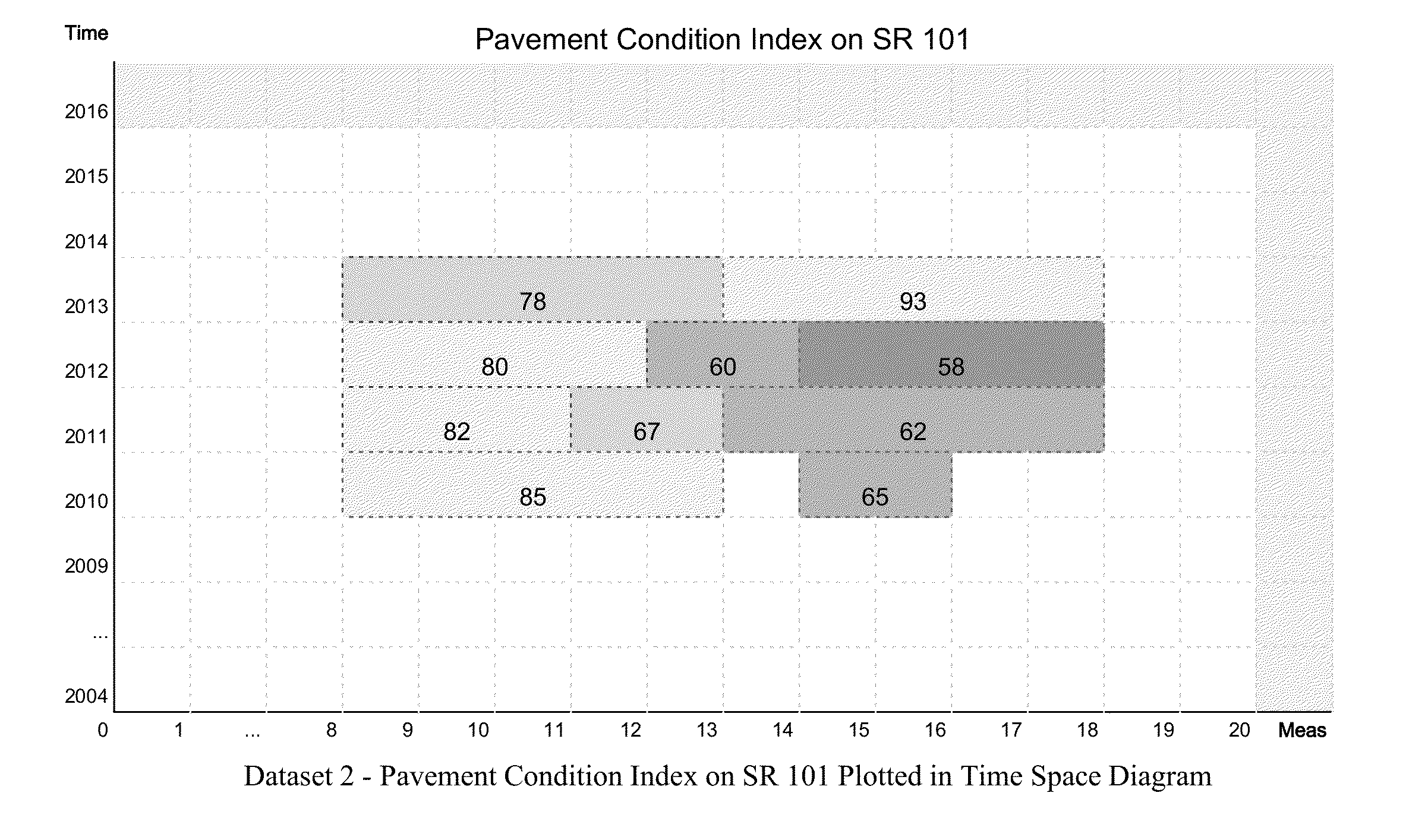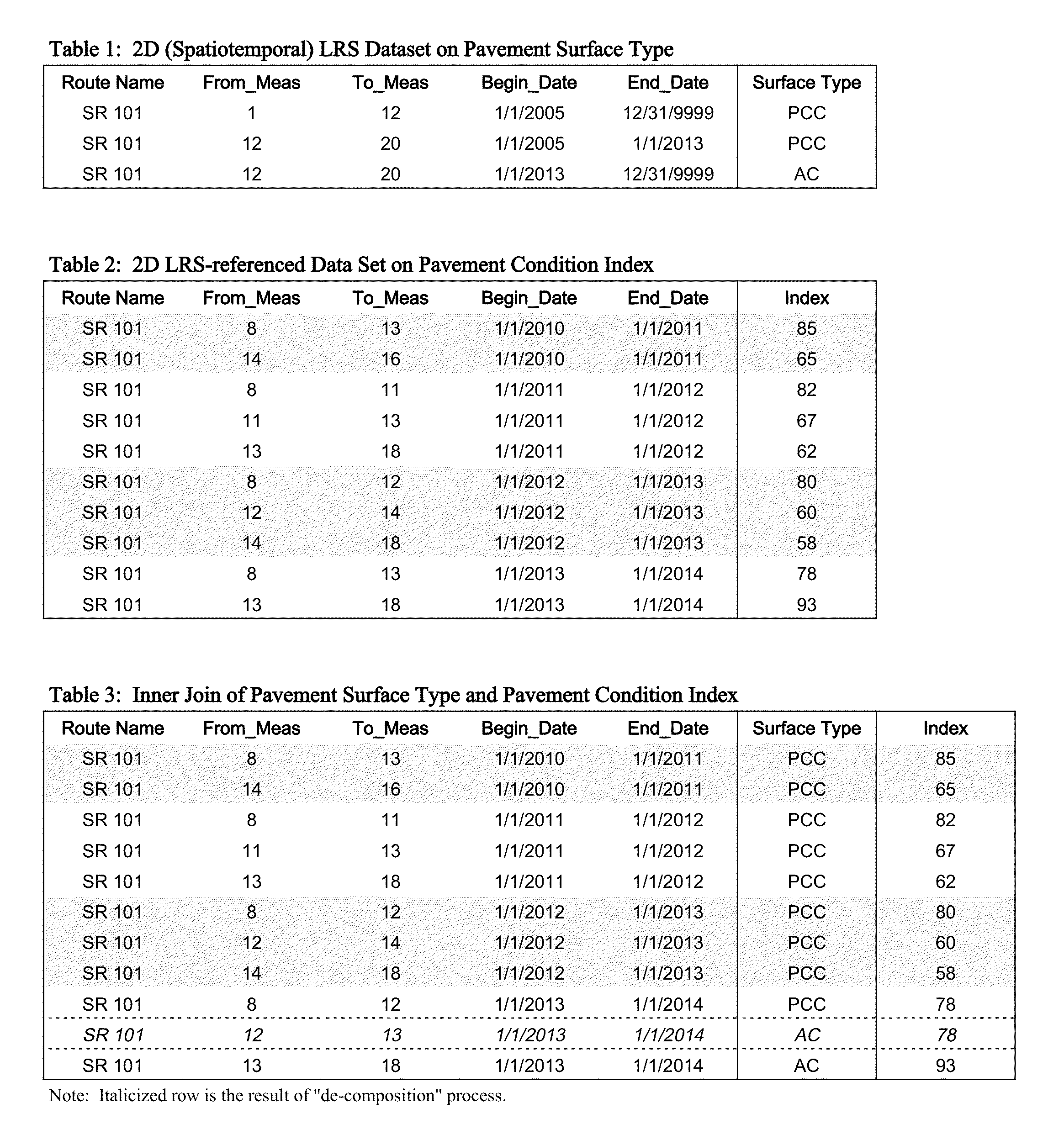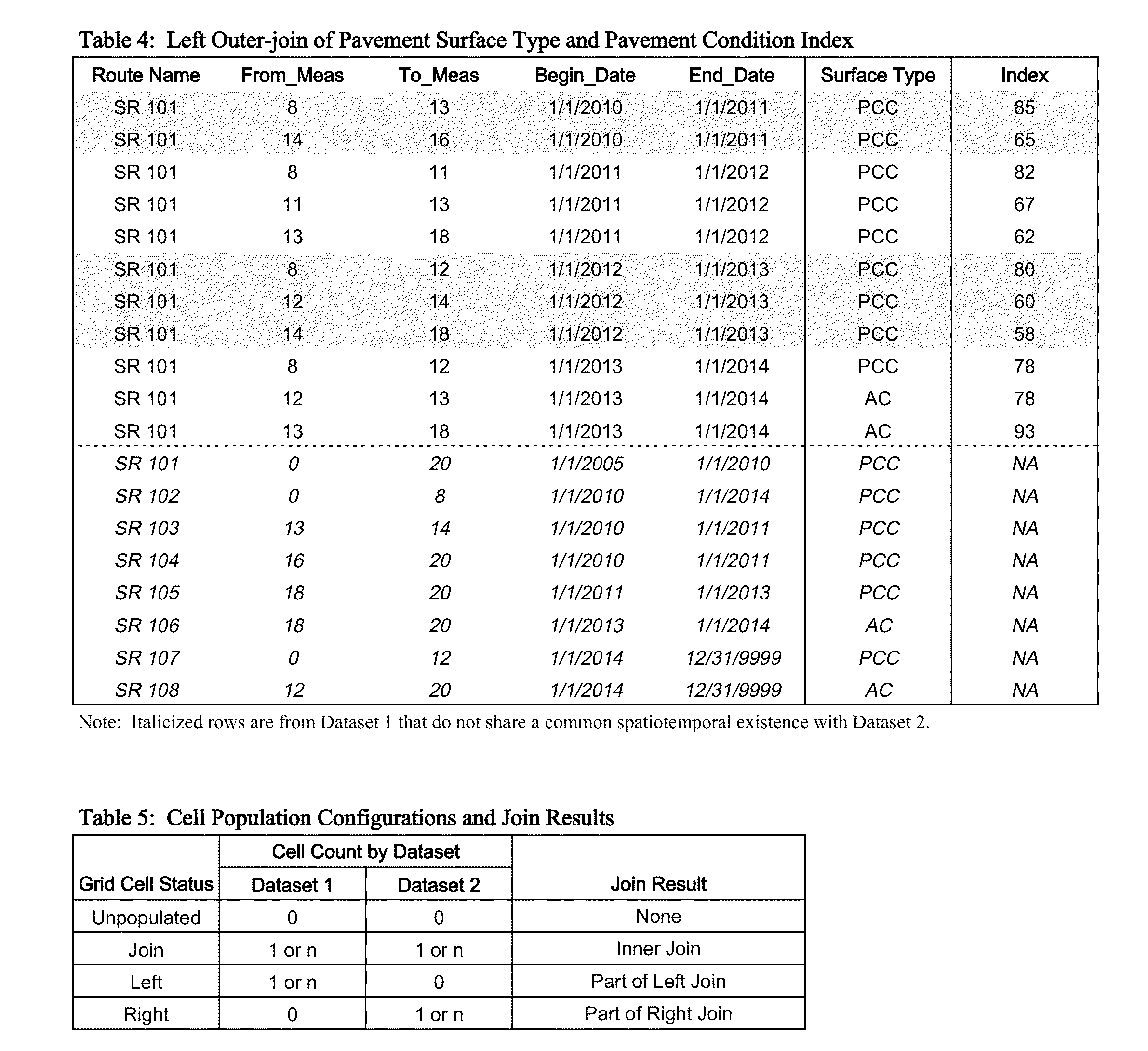Common Cell Algorithm for LRS Segment Join Operations
a join operation and common cell technology, applied in multi-dimensional databases, instruments, database models, etc., can solve problems such as inefficiency of code logic and nested loop methods
- Summary
- Abstract
- Description
- Claims
- Application Information
AI Technical Summary
Benefits of technology
Problems solved by technology
Method used
Image
Examples
Embodiment Construction
[0036]The illustration is in the 2-D space; the approach applies to 1-D as well as multi-dimensional LRS datasets. The invented algorithm can be described in the following steps:[0037]1. Create cells by meshing route spaces occupied by all segments in the joining datasets for each route. FIG. 5 shows the cells resulting from meshing route space on SR 101 from two sample datasets. The cells represent the area common in the spatiotemporal space to the two sets.[0038]2. Use the cell mesh created in Step 1 to “decompose” the segments in datasets so each decomposed segment will populate, in the full extent of the cell, one and only one cell (FIG. 6).[0039]3. Organize the decomposed segments by different join types based on their cell population configuration. Table 5 shows the cell population configuration for various join operations.[0040]4. Coalesce decomposed join operation results generated in Step 3 along segment dimensions. For spatiotemporal segments, the spatial dimension of each...
PUM
 Login to View More
Login to View More Abstract
Description
Claims
Application Information
 Login to View More
Login to View More - R&D
- Intellectual Property
- Life Sciences
- Materials
- Tech Scout
- Unparalleled Data Quality
- Higher Quality Content
- 60% Fewer Hallucinations
Browse by: Latest US Patents, China's latest patents, Technical Efficacy Thesaurus, Application Domain, Technology Topic, Popular Technical Reports.
© 2025 PatSnap. All rights reserved.Legal|Privacy policy|Modern Slavery Act Transparency Statement|Sitemap|About US| Contact US: help@patsnap.com



